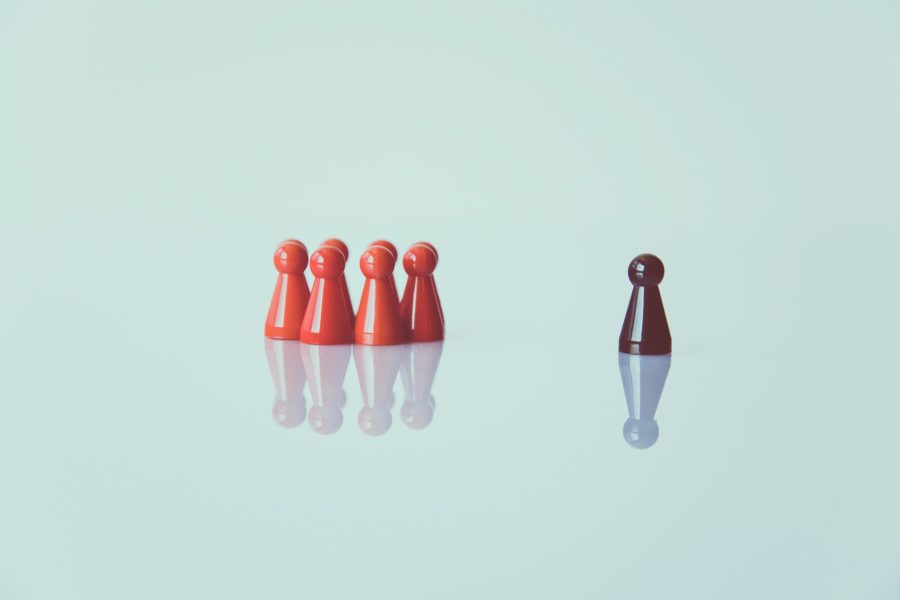UCSD Houses Quarantine’s Impacts
Apr 10, 2022
As the UCSD campus continues to lift its masking requirements, the impacts of the pandemic are obvious. However, though the struggles of quarantine continue, we can examine the past two years and learn from the pandemic as well.
Effective April 5, UC San Diego students are no longer required to wear masks in residential areas and may host guests.
Though classrooms, clinical spaces, and public transportation remain masked areas, this shift away from quarantine is a departure than times before.
However, while some may declare the pandemic “finally over,” it is important to understand what allowed for the change in policies.
Shortly after the previous return to campus movement, students quickly returned to online classes in the sudden switch to remote for the first-two-weeks-turned-four of the Winter quarter.
According to the New York Times, Jan. 14 – part of this fully remote learning period – was the all-time U.S. high of new infections, coming in at 933,326 new cases just that day.
Many students were sick during this period, even with campus population at reduced numbers and classes strictly online. Chloe Kurihara, a sophomore student from Eleanor Roosevelt College, recounted her experience in quarantine housing during this period to the UCSD Guardian.
“Basically, once they arrange for you to get picked up, they put you on a little minibus with a bunch of other people who have tested positive,” Kurihara said.
Students would arrive at their designated hotel, then receive both a room key and a KN-95 mask.
“They put you on the elevator, hit the buttons for you, and then they get out and you’re just left on your own to go to your room,” Kurihara said.
Kurihara expressed her frustration with having COVID, despite her vaccination status:two doses complete with a month-old booster.
She also commented on the complete isolation from others during this period.
“The one thing that I was expecting that didn’t happen is that there are no checks from the school on you while you’re in there. So, after they send you to isolation housing, they tell you, ‘If you have any problems, you can message us through MyChart.’” Kurihara continued, “But, you know, sending a message through MyChart, especially during a time when they were so busy, because so many students had COVID, they didn’t reply very fast. If you weren’t contacting friends or family on the outside, there would basically be nobody checking in on you when you’re in there.”
According to a study performed by King’s College, those who were quarantined were far more likely to report exhaustion, detachment from others, anxiety, irritability and a multitude of other symptoms, even after their quarantine ended.
Connectivity with others is essential. Kurihara recalled her time in quarantine; she “did a lot of Facetime calling with my friends, which helped me feel like I wasn’t exiled, which was good.”
Increased contact with others through online platforms may continue past the pandemic’s expiration date. According to BBC, Zoom predicts its stock will only continue to rise, even after its initial quarantine boom.
Additionally, Vanderbilt reports on a study indicating that the elderly relied upon video chat services to stay connected during the pandemic, and that they are unlikely to forget their newfound technological ability to communicate, even as restrictions are lifted.
People’s ability and precedent to communicate with their loved ones, not only when face to face, but through the screen, is something easily overlooked.
For the pandemic’s duration, we have done so out of necessity of social interaction, but as the world continues to reopen and people continue to diverge on their own paths of life once more, the line of communication remains available.
Another lesson from quarantine is to try to look at the glass half full. Frontiers in Psychology published a report declaring that reframing the pandemic as something with good impacts alongside the bad helped study participants cope with the drastic changes to the world.
Kurihara used this strategy to tackle her own bout with isolation.
“I did have a balcony in my room, so I liked to open the door, get some fresh air, look out. I looked at the sunset every night,” Kurihara said. “I was trying to pretend it was something like a getaway, like a little relaxation thing, cause it was in a hotel.”
People can take coping strategies like reconsidering the pandemic’s struggles and finding any potential silver lining. Positive reframing remains a commonly taught psychological tool to manage stress.
In spite of the hardship, loss and overwhelming stress of the pandemic, the world managed to continue on and find a way to move on. As the campus gradually lifts policies and things hopefully, finally return to “normal” again, the lessons about the pandemic remain.
Image courtesy of Markus Spiske of Pexels.
















Polly • Apr 18, 2022 at 7:06 am
Regardless of the situation in the world or in your educational institution – you can always get the necessary knowledge online. For many, this option is even much more comfortable, because you can choose a comfortable place to study on your own. Whether it’s preparing for exams or taking courses, there are plenty of cool resources to help you learn new information in a convenient format. For me, this resource https://www.distancecalculus.com/calculus-2/summer-course/ was a real discovery, it was they who helped me gain valuable knowledge